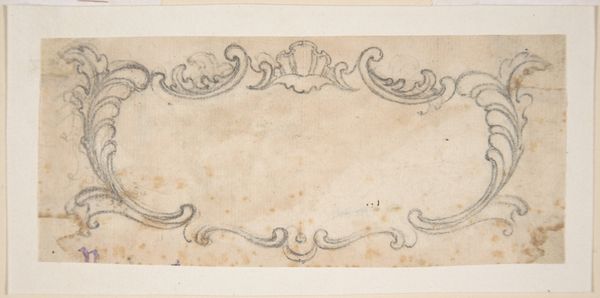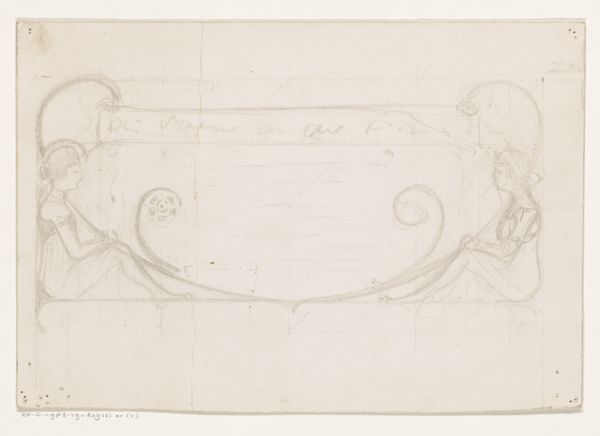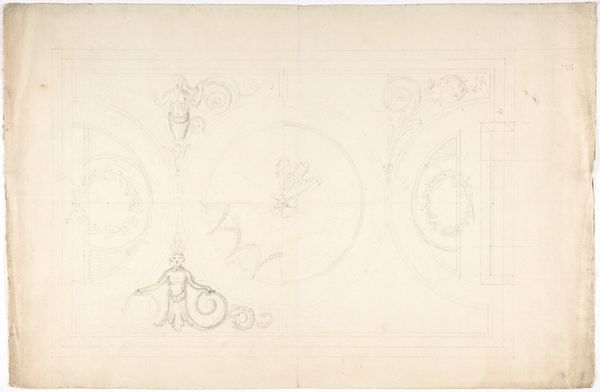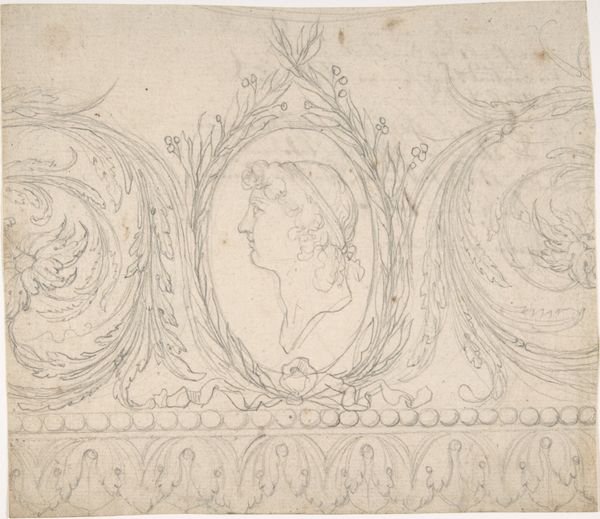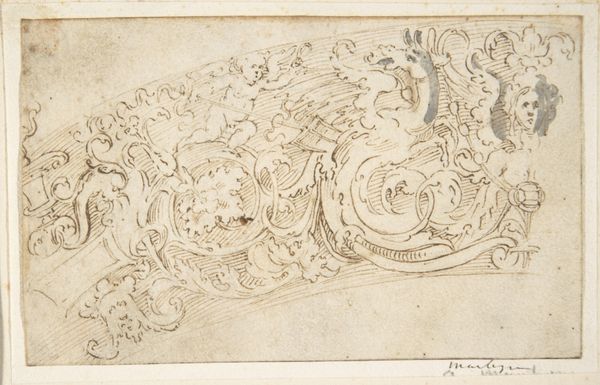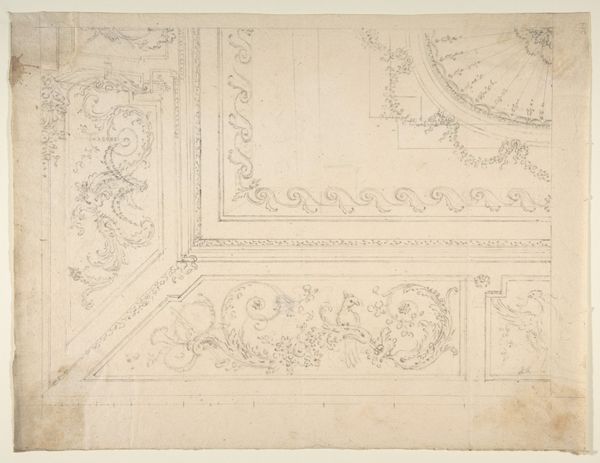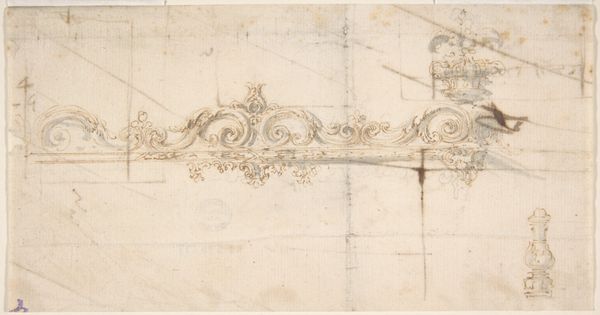
drawing, paper, pencil
#
drawing
#
paper
#
geometric
#
pencil
#
line
Dimensions: overall: 13.5 x 18.8 cm (5 5/16 x 7 3/8 in.)
Copyright: National Gallery of Art: CC0 1.0
Curator: This delicate pencil drawing presents an "Ornamental Border Design with Winged Female Figures" by John Flaxman. It's rendered on paper. What’s your initial take on it? Editor: Well, my first impression is one of subtle elegance and muted aspiration. The paleness gives it an ethereal feel, almost like a fading memory. There's a fragility to the figures despite their wings suggesting power. Curator: Precisely. Flaxman, who lived during the late 18th and early 19th centuries, was deeply embedded in Neoclassical artistic circles. These winged figures are really evocative of classical allegories – Justice, Liberty – concepts intertwined with the political upheaval of the time. Think of the French Revolution, its promises and failures. Editor: So, you are situating this seemingly simple drawing in the historical context of revolution and change. It brings to mind how gendered representations were also part of that change, even while very patriarchal social structures were solidifying in its wake. Did the women in these winged figures suggest something about the aspirations of the day, while masking some of the limitations and contradictions they faced? Curator: It's definitely productive to question the inherent assumptions regarding women's roles during this era. How were classical female figures and virtue associated with the very structure of these societal upheavals? Flaxman here subtly plays with such symbolism, framing feminine power with a decorative motif almost confining the wings, paradoxically. The imagery flirts with ideals of freedom and then appears curtailed by form, making a complex sociopolitical statement. Editor: Interesting. And in the absence of stronger, definite lines the softness and unfinished feel really accentuates these tensions that might resonate on the page for present audiences. The work seems to speak from its historical place and perhaps its figures call across time to modern considerations about the female form, social aspirations, revolution, freedom, or identity, and asks us whether anything has fundamentally changed at all. Curator: I think that's insightful. The image then serves not merely as aesthetic ornamentation but also becomes a quiet form of protest. Editor: It invites us to read the social narratives interwoven into seemingly decorative choices, challenging us to find agency. It brings Flaxman's classical language to the issues of our day. Curator: Thank you.
Comments
No comments
Be the first to comment and join the conversation on the ultimate creative platform.
